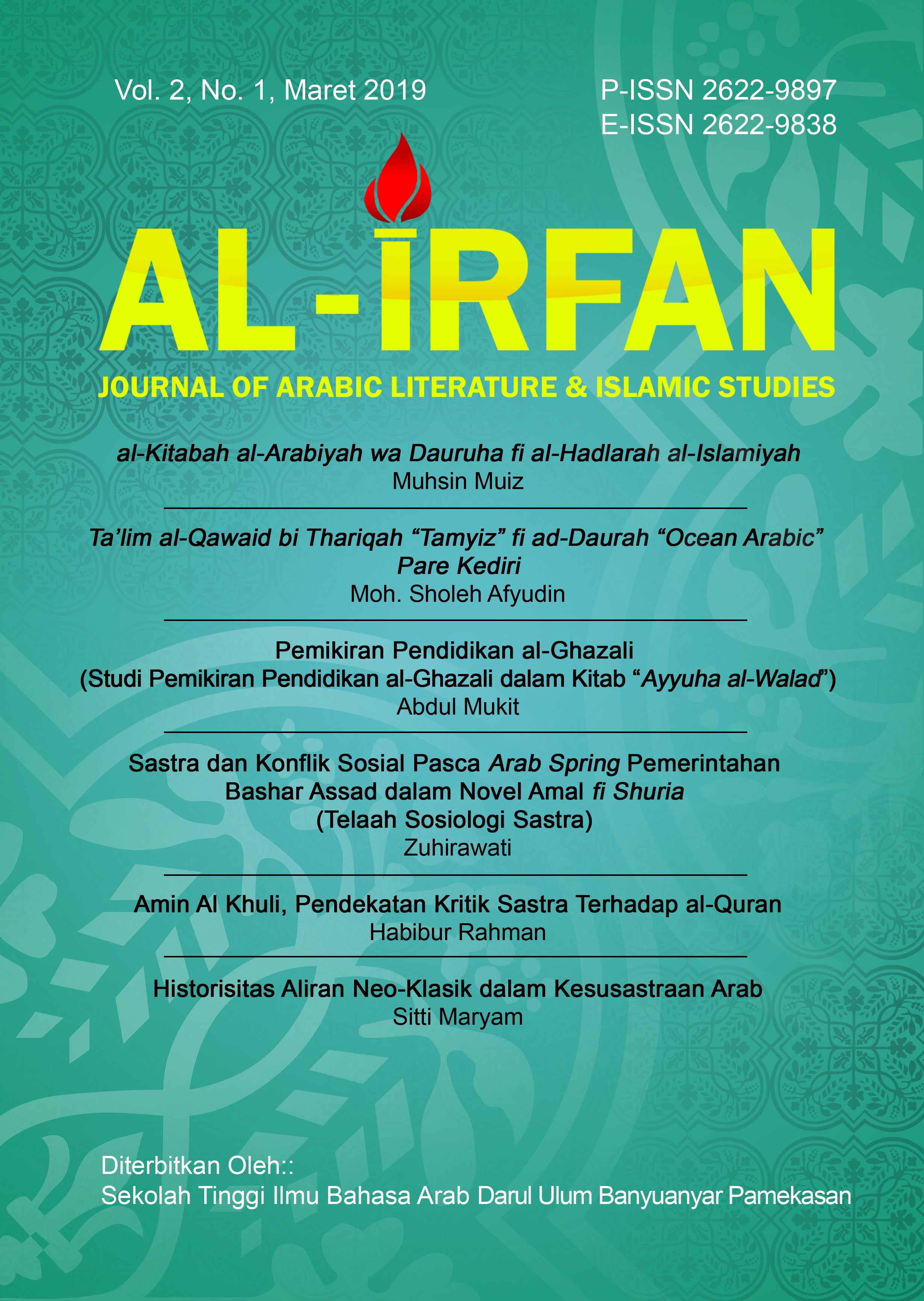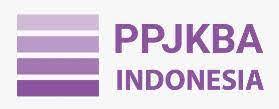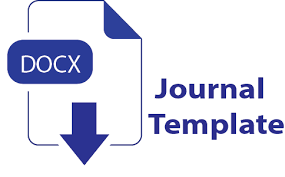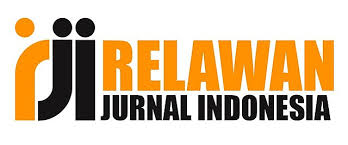Historisitas Aliran Neo-Klasik Dalam Kesusastraan Arab
DOI:
https://doi.org/10.58223/al-irfan.v2i1.497Keywords:
History, Arabic Literatute, FlowAbstract
Arabic literature has undergone such a long journey from the time of the beginning of the time of Jahili, the period of Islam, the period of Muawiyah service, Abasiah, the Ottoman dynasty, and the modern period until now. In each period of this development, Arabic literature experienced innovations that differentiated it from other periods. In the modern phase in particular, it turns out that Arabic literature has a variety of literary schools that have appeared alternately, both because of the motivation of criticism of the literary models that emerged before and because of refining other streams that emerged in the same period of time. The emergence of this neoclassical school was initially a reaction to Napoleon's arrival in Egypt in 1798, which marked the entry of French culture into the Arab world. This school also maintains strong Arabic poetry rules, for example the necessity to use wazan, qāfiyah, the number of words is very large, the uslūb is very strong, the themes still follow the previous period, such as madah, ritsa (lamentations), ghazal, fakhr, and the movement from one topic to another in one qasidah (ode) Problems raised in this study include: 1. What is the history of Arabic literature? 2. What are the factors that arouse Arabic literature? 3. Who are the pioneers of the neoclassical school? The results in this study are: 1. The history of Arabic literature has experienced such a long journey from the period beginning at the time of Jahili, the period of Islam, the period of Muawiyah's service, Abasiah, the Ottoman dynasty, and the modern period until now. During the Abbasid period there was a period of emotion in Arabic literature, and suffered a setback during the Ottoman period until the beginning of this phase since the reign of Muhammad Ali in Egypt after colonialization Francis ended in 1801. 2. The factors include: Al-Madaris (Schools), Al-Mathba'ah (Printing), Ash-Shuhuf / Al-Jaro'id (Newspaper), and Tarjamah.3. One of the pioneers of the neoclassical school of Arabic poetry or commonly called al-Muhāfizun is Mahmud Sami al Barudi
References
Abidin, Z. (1987). Mudzakarah fi tarikhi al-adab al-‘Arabi. Dewan Bahasa dan Pustaka, Kementerian Pendidikan Malaysia.
Ali, A., & Muhdlor, A. Z. (1998). Kamus Indonesia–Arab kontemporer (إوذوویسي-عربي العصر" كرابیاك").
Al-Iskandi, A., & Anani, M. (1916). Al-adab al-‘Arabi wa tarikhuhu.
Anwari, M. K. (2012). Madzhab puisi Arab modern: Dialektika Barat–Timur. Yogyakarta: Adab Press.
Bahrudin, A. (2011). Sejarah dan tokoh kesusastraan Arab modern [E-book]. http://bahrudinblog.wordpress.com
Badawi, M. (n.d.). Mukhtarat min al-shi’r al-‘Arabi al-hadith. Beirut: Dar al-Nahar li al-Nashr.
Dlaif, S. (1961). Al-adab al-‘Arabi al-mu’ashir fi Mishr. Kairo: Dar al-Ma’arif.
Ichsan, F. (n.d.). Sastra modern. Diakses dari http://faristinichsan.blogspot.com
Kamil, S. (2009). Teori kritik sastra klasik dan modern. Jakarta: Rajawali Press.
Thayyib As-Saasiy, U. (1993). Dirosat fi al-adab al-‘Arabi ‘ala marri al-‘ushur. Jeddah: Dar al-Syuruq.
Taufiq, A. D. (2011). Perkembangan puisi Arab modern. Adabiyyāt, 10(2), Desember.
Downloads
Published
How to Cite
Issue
Section
License
Copyright (c) 2019 Sitti Maryam

This work is licensed under a Creative Commons Attribution 4.0 International License.
Lisensi :
Al-Irfan: Journal of Arabic Literature and Islamic Studies is published under conditions Creative Commons Attribution 4.0 International License / CC BY 4.0 This license permits anyone to copy and redistribute this material in any form or format, modify, modify, and make derivative works of this material for any purpose, including commercial purposes, so long as they credit the author for the original work.











